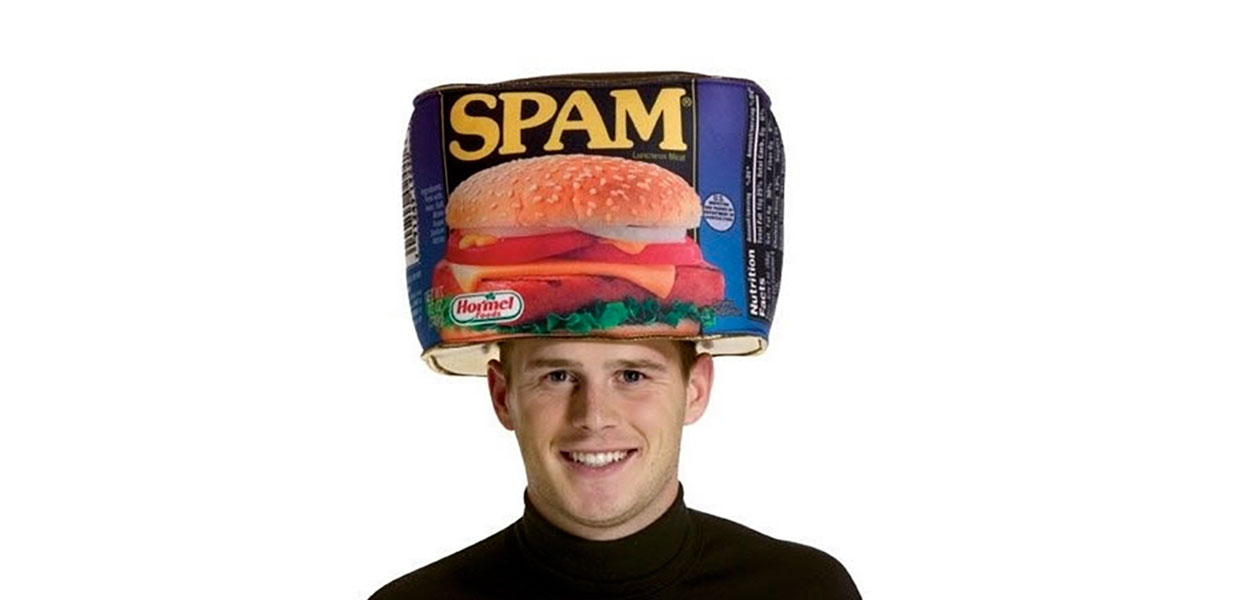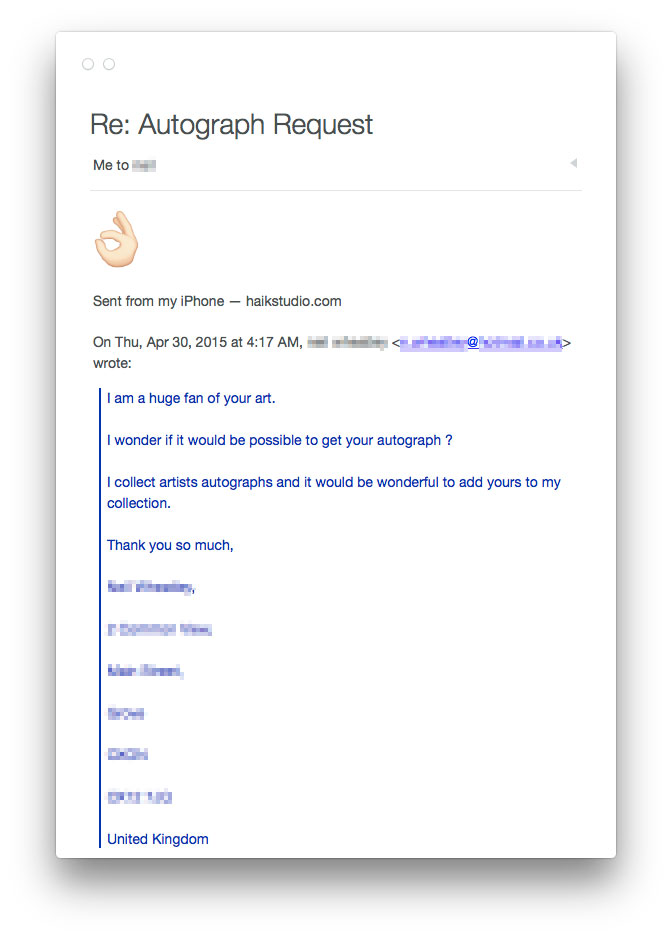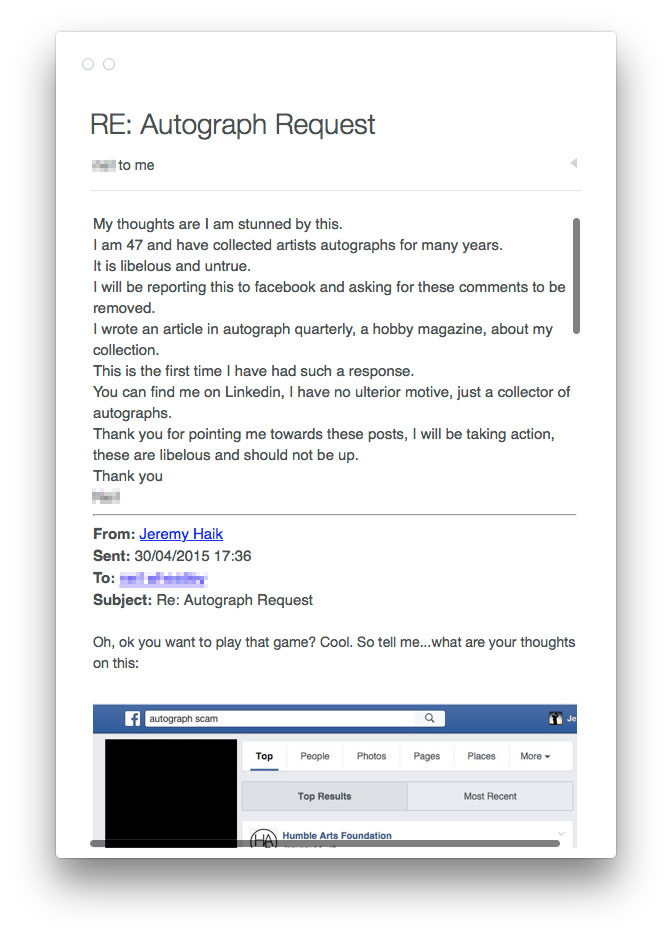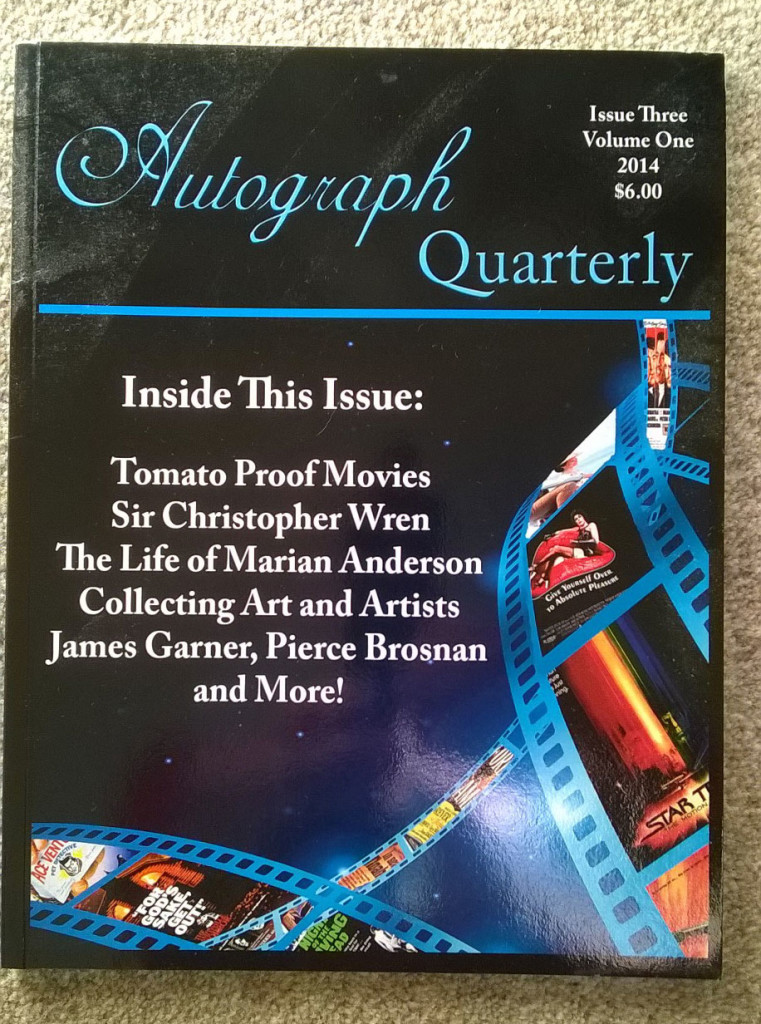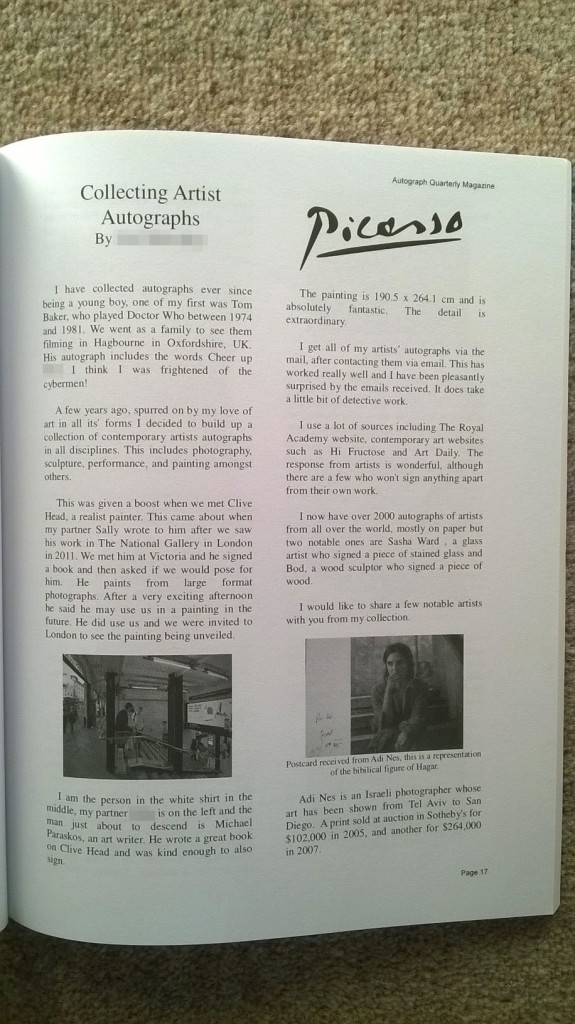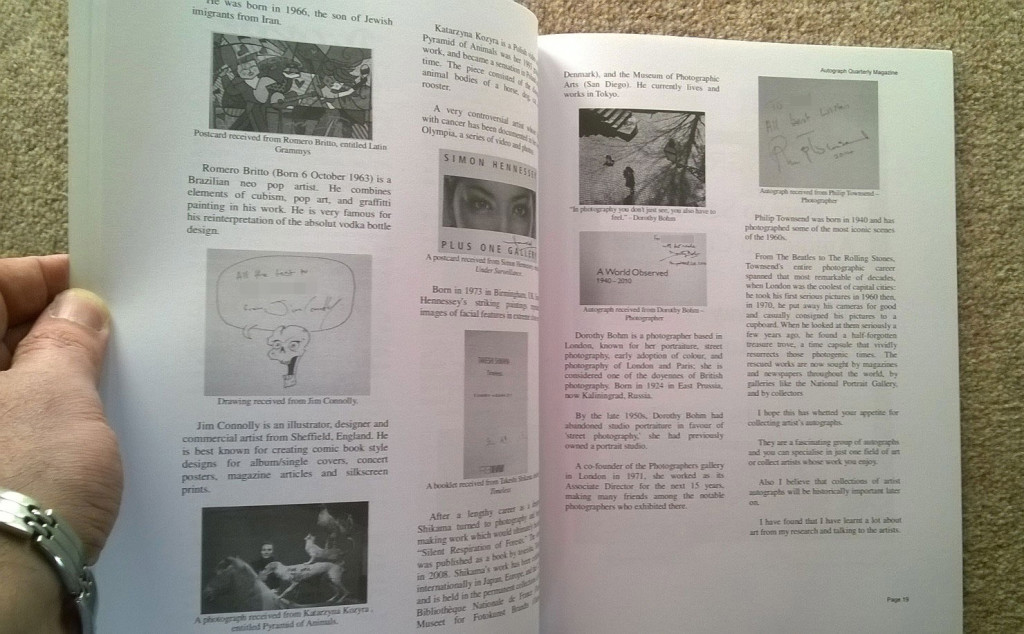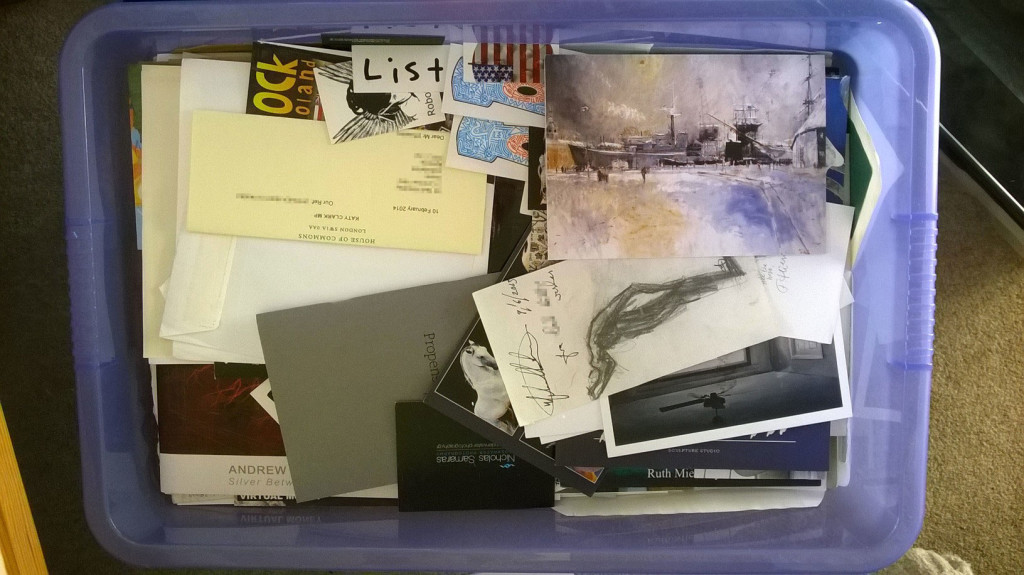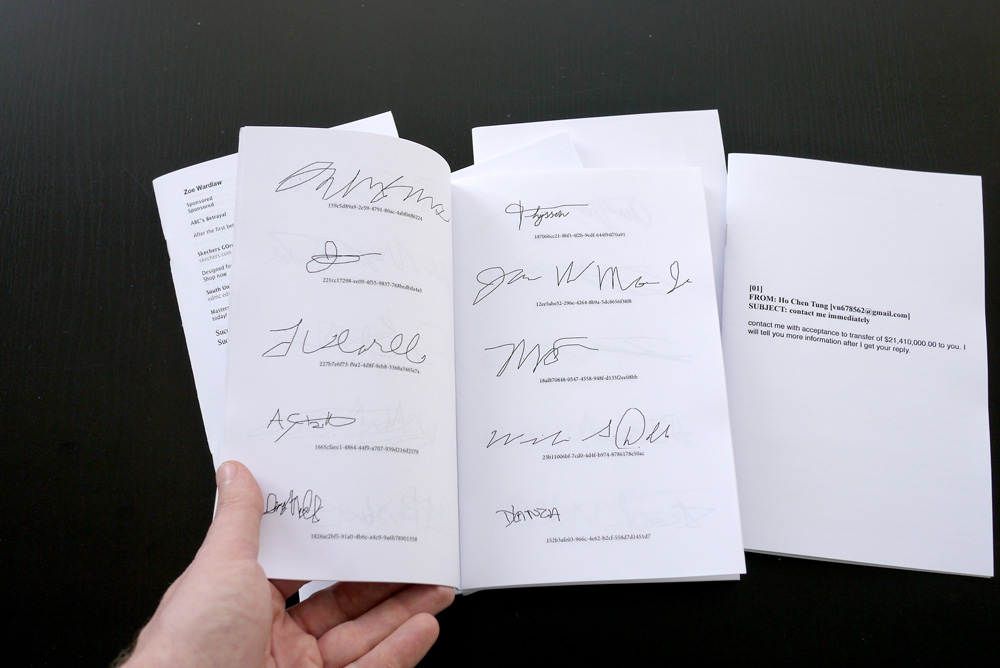Can I get your autograph? : When spam talks back.
A couple weeks ago, I received an email that said simply the following: “I am a huge fan of your art. I wonder if it would be possible to get your autograph? I collect artists autographs and it would be wonderful to add yours to my collection.”
The fact that I got a spammy message is not particularly interesting or surprising. But, If you’re an artist — and especially if you’re a photographer —there’s a good chance that you’ve received exactly the same email, down to the letter. Go ahead and search your email (and email me if you did). If you did get the same one, you probably brushed it off like you would any other junk that made it past your spam filter. Oddly enough, just before the email appeared in my inbox, I had seen a Facebook post from last November asking about an email with the exact language in the my email…from the same person. It was in a photographers group, and several members — including several I know personally – had received the same email as me, and were wondering if this was for real. The general tone of the comments was roughly as follows:
- Don’t do it. It’s a scam
- Most likely it’s an identity theft organization
- They find your work online, ask for your autograph, then apply it to the work they’ve printed and try to sell it
- See you all in the shantytown we will all be living in after [he] steals everything we own!
So when “my” email contained the same exact wording from the same exact person, I was naturally suspicious. But I figured, why not mess with the guy? I mean, who does he think he is anyway? So I wrote him a very brief reply:
“That’ll show him” I thought, fairly pleased with how awesomely I’d just burned this guy. And so I was a little surprised when he wrote me back, literally within 5 minutes:
“Thank you so much.”
For some reason, this response crossed a line. I hadn’t planned to send anything other than the “ok” (hoping he’d get more than one meaning from it). But then I wondered, “Wait…Is this guy going to print my website photos and paste an emoji on them as a signature?” I looked around online and was surprised that I couldn’t find any examples of artists had actually done this. All I could find was this awesome pillow for summer campers. Nonetheless, this guy seemed to be taking me seriously, so I felt I had to let him know about it:
“Yeah. Sure. Stop trying to scam people.”
I figured that would be the end of it. 2 minutes later:
“Not trying to scam people, I have collected artists autographs for over 20 years.
Sorry to have bothered, very odd response.”
Ok, well this is a pretty weird scam. At this point I assumed that he was committed to his little ruse and was just trying to wear me down with this whole feigned innocence act. I wrote back — a little more abrasively this time — “Oh, ok you want to play that game? Cool. So tell me…what are your thoughts on this:” And, after blacking out all the profile pictures and names, I pasted in a screenshot of the Facebook conversation that listed his first and last name, email address, and identically worded email. His response:
Right. Libelous. Obviously. By this time I was curious enough to ask the guy some more questions, and I was willing to entertain the possibility that he might be legitimate. I sent him a longer, strongly-worded email that advised him to, among other things, personalize the language in his emails rather than using identical language in each request: “You should really know better, that is practically the textbook definition of spam.” He seemed genuinely apologetic, thanked me for my “measured response” and said he’d take my thoughts into account in the future. Because that’s how he wins my trust and then exploits it, right? I asked him to send me some proof of his collection, and of the article he wrote in Autograph Quarterly Magazine. I couldn’t find much about this magazine apart from their site (which seems to have been made around 1996) and this discussion on a hobbyist forum, which only raises further suspicion. He said he’d be happy to. Here are some of the photos he sent me:
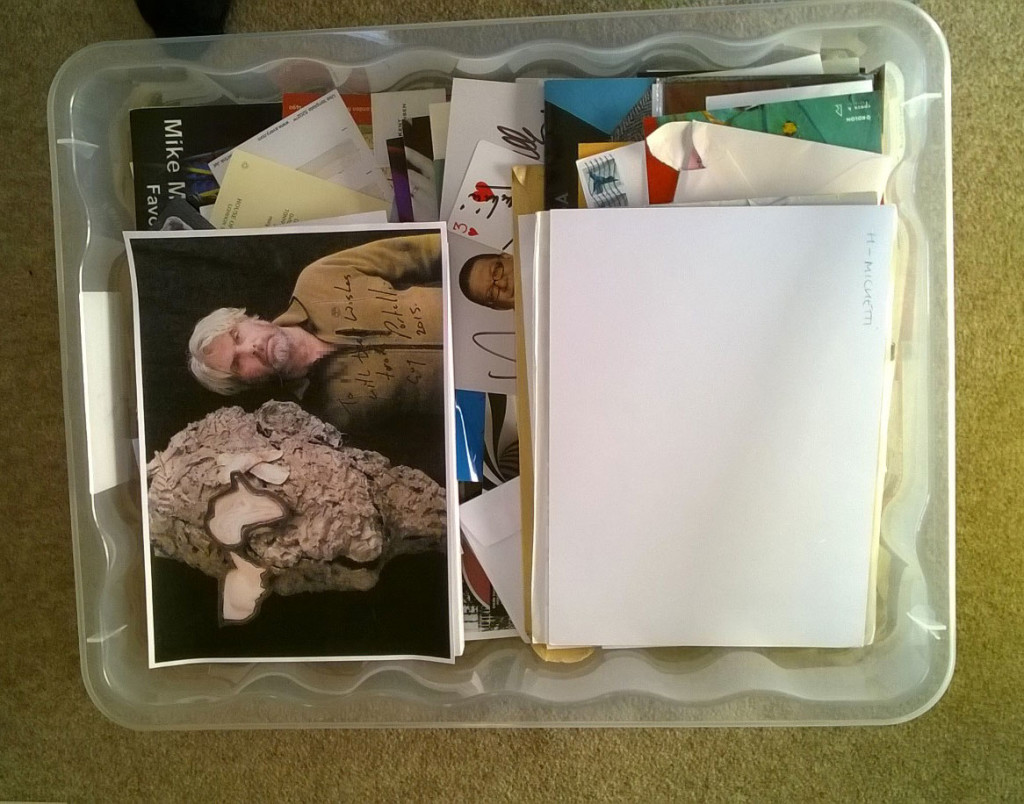
Another bin of autographs, presumably? Is that Penn Jillette???
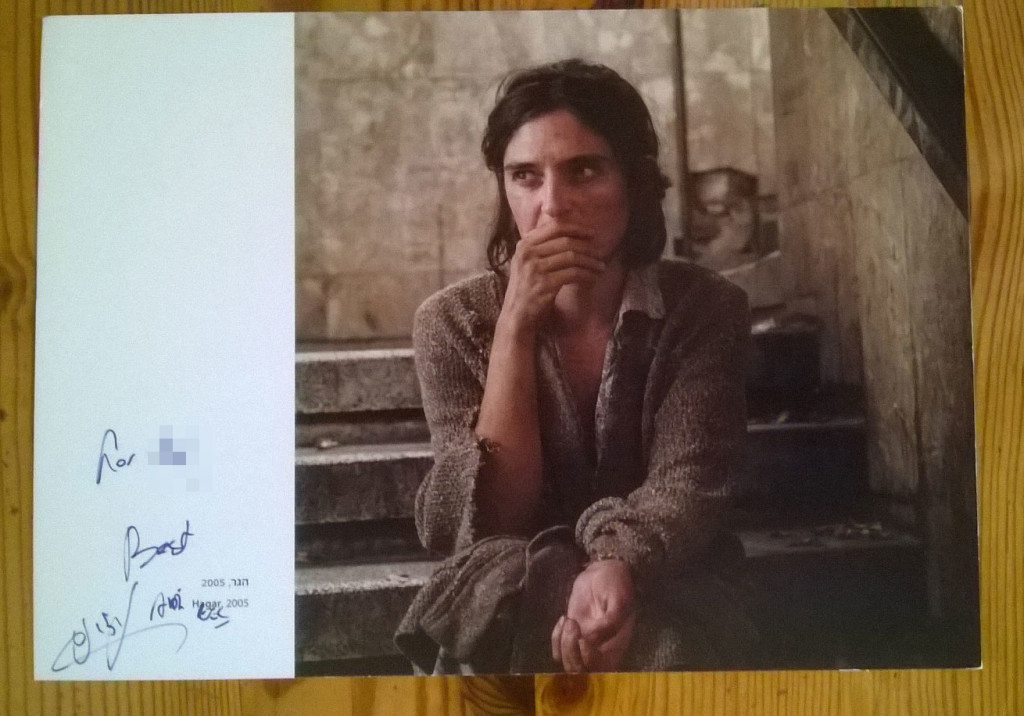
Adi Nes – Represented by Jack Shainman
Over the past 2 weeks I’ve exchanged around 30 emails with this person, and I still have no idea if he is genuine or not. Call me cynical, but it’s hard to believe that there is someone out there collecting artist’s autographs (and that they want mine). But if this is a scam, this guy must be pretty committed to his cover story, and so I’m just really not sure. It’s why I’ve decided to keep his name anonymous (although you can probably figure it out pretty easily if you try). Here’s what he’s told me about himself over the course of our correspondence:
- On what he collects: “I have everybody from sculptors to performance to photographers to graffiti to electronic / digital to textile artists…Photography is one of my most favourite types of art.”
- On how big his collection is: “I have over 2000 autographs including artists, politicians, magicians, sports stars…I think [my collection] is the biggest collection of contemporary artists autographs.”
- On what he does with the autographs: “I don’t display them or do anything apart from store them safely…I genuinely believe that at some point my collection will be significant, I have pioneers in art, early performance artists, and as art changes and different art disciplines occur, I hope to also get these autographs…A museum would be a good home.”
- On how he finds artists: “I first find artists I like the work of, then research shows, try to attend if possible, research awards. I try to research notable, emerging, news worthy artists.”
- On why he doesn’t just collect artwork instead : “I do collect art, I have a small collection.”
- On why he wrote me back: “I wrote back because I have done nothing wrong, I am neither scamming or spamming, I am not selling a service, just asking for an autograph. I felt I needed to show that I had no ulterior motive.”
- On if he has considered the monetary value of his collection : “No never, I work, I have a home. Don’t have the need for the money. Don’t need to sell collectibles, you can’t replace them…and I just enjoy collections.”
- On what he does for a living : “I work as a salesperson, on the telephone. Selling plumbing equipment”
In response to my asking if anyone had ever accused him of being a scammer (before me), he said this:
“I have had a few emails back saying no to autograph, but nobody has been rude or called me a scammer, I am not and this is the first time I have had such a response.”
Well now I feel like a jerk. But…really? Out of thousands of emails I’m the ONLY ONE who thought to say something back to this person? That is the hardest thing of all to believe, for me. Yet even if this is a total shake-down, I can’t really figure out what the scam is. Think about it: How valuable is your autograph/signature in today’s world? According to the BBC, “the signature is in retreat” and rapidly being replaced by digital methods of authentication. This collection of anonymous and mostly illegible signatures captured at POS stations was featured in the first installment of Paul Soulellis‘ fantastic and ever-evolving Library of the Printed Web:
Looking at these, or perhaps this famously minimal signature, and it’s pretty easy to see the drawback of using signatures when more secure and sophisticated options are available thanks to technology. Hyperallergic writer
Whatever the truth may be about my email friend, there ARE definitely scams targeted at artists floating around the internet. They usually involve a more direct appeal for money in exchange for “exposure” or as inflated competition fees. But there also appear to be more than one example of individuals who have taken this shotgun-approach to collecting artist ephemera: a very similar case involving a handwritten letter from a French girl is explained here, and This American Life has even done a story on an English man who solicited artwork from “more than a few” artists, allegedly for his artistically-inclined autistic son (here’s the link, it’s worth a listen). Both of these actually seem to be genuine in the end, if not a little weird. And it may well be the case for my guy as well. But either way, I’m not sending anyone my autograph.
